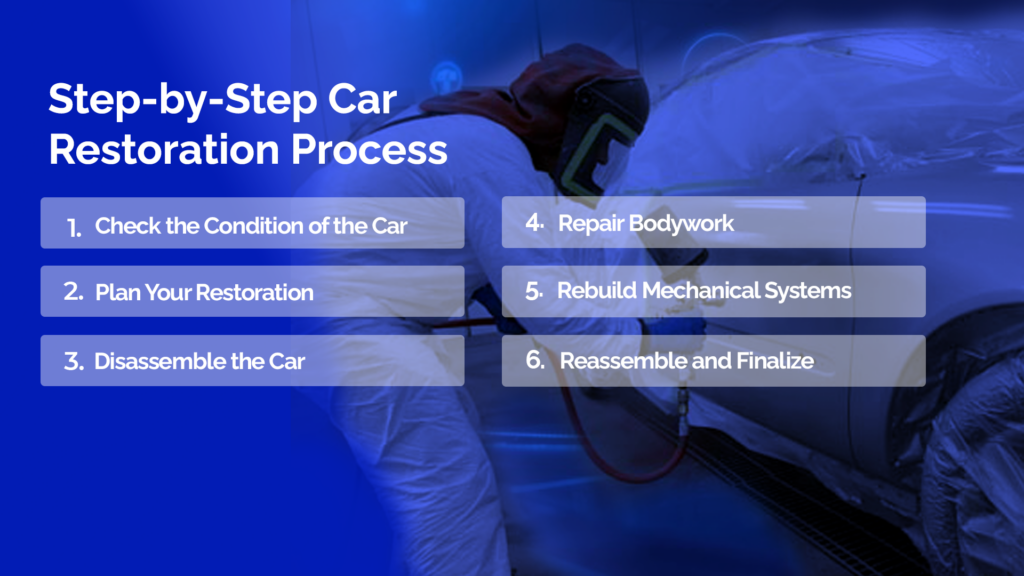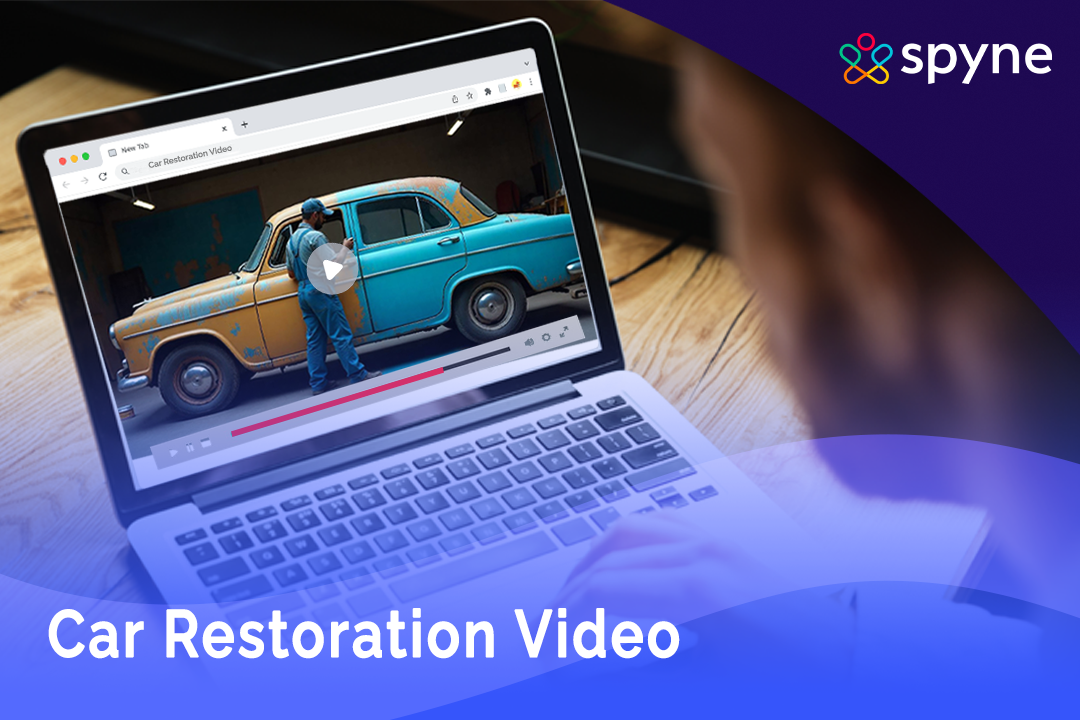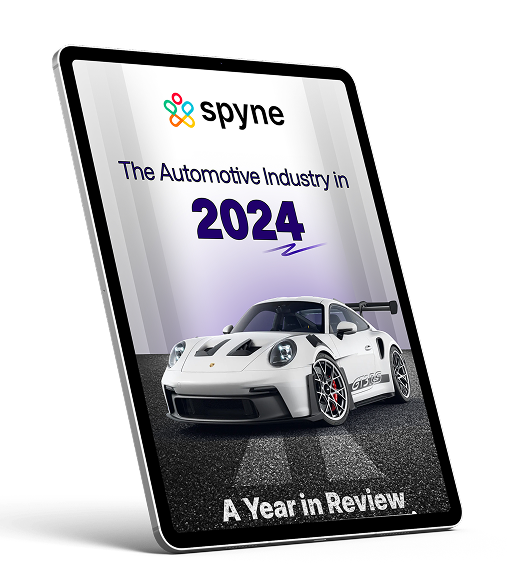The market for automotive restoration is estimated to grow from $2,944 billion in 2024 to $6,941.9 billion by 2032 at a CAGR of 10.90%. Thus, car restoration videos have become a popular category that attracts audiences with the transformation of reviving classic, vintage, or neglected vehicles.
In this blog, you will learn everything about Automotive restoration videos, including their types, important tools, step-by-step process, and much more. Let’s get started.
What Are Car Restoration Videos?
In old car restoration videos, you can see everything from old, rusty cars to beautifully restored cars. Thus, cinematic car videos of restoration provides a mix of learning, entertainment, and inspiration. Viewers watch these videos for various reasons: some enjoy learning the restoration techniques and tips, while others find the process relaxing and satisfying.

Types of Car Restoration Videos
Car restoration videos are a popular genre on video-uploading platforms like YouTube. Here are the types of car restoration videos:
1. DIY Restoration Tips
In these types of videos, you can find some practical advice to restore your vehicles at home. For example, a video with five essential tips to save thousands of dollars during the restoration process, including advice on purchasing parts and performing metal repairs.
2. Shop Tours
Many channels upload tours of professional restoration shops and highlight the equipment and techniques. For instance, you see a V8 Speed & Resto Shop tour, which showcases various muscle car restorations and the services offered such as bodywork, mechanical repairs, and interior services.
3. Detailed Restoration Videos
Some videos focus on specific restoration projects from start to finish. For instance, classic car restoration videos in a workshop where the entire process from stripping a car down to its frame to painting and reassembly is shared.
4. Before-and-After Transformations
These videos generally show the transformation of vehicles after restoring from poor condition to new status. They often include time-lapse footage or step-by-step processes to highlight the skills involved in restoration.
5. Restoration Challenges
Some channels upload only challenging restorations such as restoring cars that have been abandoned for a long time or with extensive damage. These videos often emphasize problem-solving and creativity in overcoming obstacles during the restoration process.
6. Specialized Techniques
Certain videos focus on specific techniques used in car restoration, such as rust repair or painting. These can be valuable for viewers who wank to learn particular skills according to their specific requirements.
Essential Tools for Car Restorations
While watching the best car restoration videos, you should also know the essential tools for car restoration. Here are some of the tools you must have:
-
Air Compressor
A multipurpose tool used to power hydraulic tools, spray paint and do other activities.
-
Floor Jack and Jack Stands
Required for safely raising the vehicle to access the undercarriage for repairs and maintenance.
-
Creeper
Allows for effortless movement under the automobile while working on it increases comfort and accessibility.
-
Socket Set and Wrenches
A complete set is required for loosening and tightening bolts of various sizes throughout the car.
-
Screwdriver Set
Disassembling components requires both Phillips and flathead screwdrivers in a variety of sizes.
-
Pliers
Diverse varieties, including needle-nose and locking pliers, are required for grasping, cutting, and bending materials.
-
Welder
Important for metal repair and construction, particularly when dealing with rusted or broken panels.
-
Grinder
Used to cut, shape, and smooth metal surfaces during repair.
-
Heat Gun
Effective in removing paint, bending plastics, and loosening adhesives without damaging surfaces.
-
Torque Wrench
Ensures that bolts are tightened to the proper specifications and prevent damage to components.
-
Paint Sprayer
Traditional brushes are not as effective as spray guns to obtain a professional finish on painted surfaces.
-
Multimeter
It is essential for identifying electrical problems by measuring voltage and current in the vehicle’s systems.
-
Shop Vacuum
This tool keeps the workspace clean by eliminating dust and dirt created during repair activities.
-
Impact Wrench
It speeds up the process of removing stubborn nuts and bolts that are difficult to release manually.
-
Body Panel Gauge
It ensures that body panels are properly positioned during the installation or repair process.
Step-by-Step Car Restoration Process
In restoring old cars videos, there are some common steps followed. Here is the step-by-step process to follow when you restore a car:

-
Check the Condition of the Car
First, you have to examine the car closely with 3D car view and car merchandising. Check if there are rust, dents, and any mechanical issues. Then, test the engine, brakes, and electrical systems. This will help you understand what needs fixing and how much work is required.
-
Plan Your Restoration
Create a detailed plan that outlines your goals, budget, and expected timeline. Additionally, you have to decide which parts you want to restore or replace. With a clear plan, you can keep your work organized and help you avoid surprises later on.
-
Disassemble the Car
Then, you have to carefully disassemble the car parts. You can start with major components like the engine and interior parts. Label each piece and store screws and small parts in labeled bags. If you have less experience, you can try taking photos during this process so that you can remember how everything fits together.
-
Repair Bodywork
Focus on fixing any body damage next. Remove rusted areas and replace them with new metal if needed. Use body filler for dents, then sand the surface smooth. Once repairs are done, apply primer followed by paint to give your car a fresh look.
-
Rebuild Mechanical Systems
Do a thorough inspection and rebuild the engine and other mechanical parts. Replace worn-out components like gaskets and belts. Make sure everything is clean and properly lubricated for the best performance and experience.
-
Reassemble and Finalize
Put all the parts back together following your notes and photos. Once done, you can take the car for a test drive to check for any issues. Then, if necessary, you may make adjustments and enjoy your newly restored vehicle.
Key Elements of a High-Quality Car Restoration Video
High-quality vehicle restoration videos should include some key elements such as:
-
Clear Objective and Structure
A good video starts with a clear purpose, such as showcasing a full restoration, teaching a specific technique, or sharing tips. You can organize the content into sections such as disassembly, bodywork, mechanical repairs, and reassembly. A relevant flow keeps your audience engaged from start to finish.
-
High-Quality Visuals
In custom car restoration videos, detailed visuals are extremely important. You can take close-up shots to highlight processes like rust removal, welding, or painting. It can be a great option if you show before-and-after comparisons. Good lighting and steady camera work ensure viewers can see every step of the process.
-
Expert Commentary
To make your video stand out in the crowd, you need to add on-screen explanations to enhance its value and do a thorough vehicle inspection. Explain why you are using certain tools or materials, share tips to avoid common mistakes, and provide insights from personal experience.
-
Practical Tips and Tricks
You should share some practical advice that viewers can use in their projects. For example, you may explain cost-effective ways to source parts or demonstrate efficient techniques for cleaning or repairing components.
-
Engaging Conclusion
Finally, you can end with a summary of the project’s highlights and encourage interaction by inviting comments or questions. This builds a sense of community and keeps viewers coming back for more.
Popular Formats of Car Restoration Videos
Here are some popular formats of car restoration videos:
-
Long-Form Restoration Series
These videos document the entire restoration process over multiple episodes. Viewers see every detail, from disassembly to final touches.
-
DIY and How-to Guides
Step-by-step instructional videos are perfect if you want to learn specific techniques, such as rust removal, engine rebuilding, or upholstery repair.
-
Time-Lapse Restorations
Time-lapse videos showcase the entire restoration process in a few minutes. You can enjoy a dramatic transformation attractively. This format is ideal for quick, engaging content that highlights the effort behind the work.
-
Before-and-After Comparisons
These videos focus on showcasing the dramatic transformation of a vehicle and emphasize the artistry and effort involved in bringing it back to life.
Trends and Innovations in Car Restoration
Trends and innovations in car restoration videos are changing over time. Here are some latest trends:
-
Time-Lapse and Short-Form Content
Time-lapse short videos have gained popularity compared to lengthy restoration processes. This format appeals to viewers with limited time, providing a quick yet satisfying overview of transformations.
-
Eco-Friendly Restorations
A growing trend in car restoration is the focus on eco-friendly practices. This approach resonates with viewers who are increasingly concerned about sustainability in the automotive industry.
-
DIY and Community Engagement
There is a shift towards DIY content, where creators provide detailed guides on specific restoration tasks. This format encourages community engagement, allowing viewers to share their experiences and tips.
-
Advanced Technology Integration
Car restoration videos incorporate modern technology, such as 3D printing and advanced diagnostics. This improves the quality of restorations and makes complex repairs more accessible.
Conclusion
At this point, you have the overall information on car restoration videos. A good car restoration video has a clear purpose. For instance, it shows you the restoration process, teaches you techniques, or shares tips. The detailed visuals in any restoration video are essential. Good lighting and a steady camera help your viewers see every step of the process. Finally, you end the video with the project’s highlights and encourage interaction by inviting any questions from your viewers.



















